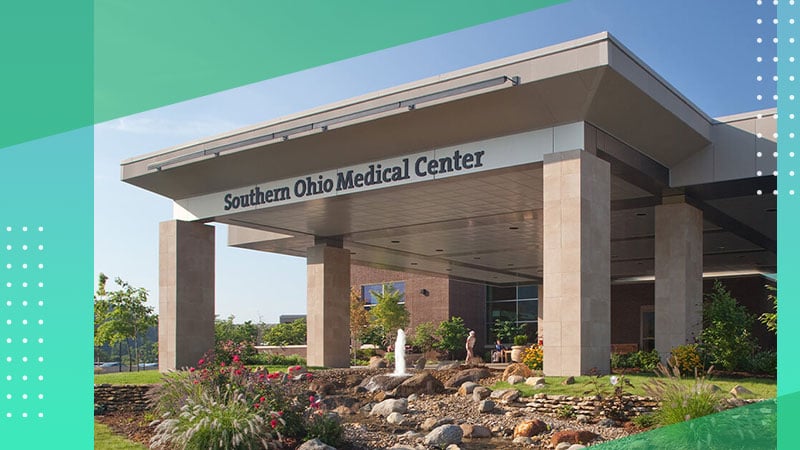
Numbers matter.
If there’s one message that healthcare providers, executives, and IT staff have learned through the evolution of Meaningful Use, it’s that the data we collect and report has significant impact on our sustainability.
Not only do the numbers we transmit to CMS matter, but the numbers they send back — in the form of financial reimbursements — also matter.
Over the past several months, Rockdale Medical Center worked to upgrade our quality reporting to get ready for the eCQM reporting goals for Meaningful Use Stage 3 in 2018, when every CMS-certified hospital is required to meet these standards.
Beyond that, our work ensures that we have a sustainable eCQM reporting process so we can continue to achieve the patient treatment success that Meaningful Use helps us provide.
Here are some lessons we learned at Rockdale, and how they could help your hospital achieve Stage 3.
Get effective provider feedback
Originally, the EHR at Rockdale allowed ED providers to enter free text notes and narratives; with Stage 3, that was no longer possible.
Our IT staff realized early on that we needed discrete fields for eCQM data capture, and that there was no way to capture subjective data from the free text note. So we had to ensure that the new structured fields fit smoothly into the documentation processes.
This would also mean training physicians and nurses on a series of new questions that would be captured during their workflow.
When we reviewed how ED providers were using the physician documentation templates, we found that they were not using the structured problem list or specific discharge elements.
We also realized that inpatient providers weren’t using those templates, meaning we really had no way to capture the data between the two settings.
In building the eCQM reporting structure, we decided to build in more than was needed electronically to aid with provider workflows; that way, most of the eCQM inquiries were being answered in one spot and in the same way.
Ensuring we had the best practices for collection meant more research and communication with quality and leadership. There are lots of moving parts and communication and research is key.
In working with providers, we streamlined the questions and answers in the documentation system to improve the process of entering data.
We narrowed down our questions based off of what the Quality Department told us and what answers the provider would need to choose for our facility, and then we drafted the questions with the answers based off of that. Once we showed it to the providers, they had an opportunity to make appropriate changes that would still fit within the character-limited question fields.
Look for opportunities to automate
Another implementation challenge was keeping up with the mapped elements for each query in the system. Initially we had to map the value set code manually to the required eCQM element, but this would mean constant maintenance moving forward.
When we realized how much mapping maintenance this would require, we partnered with Intelligent Medical Objects (IMO) to provide some automation and update the required codes as each new version of code data came along, usually annually.
Initially in the IMO system, searching by a keyword like “rehab” could produce hundreds of potential values, and trying to find that one specific element to produce the needed value set code was cumbersome.
By implementing an automated process, where the previously built manual maps have been reevaluated and are now mapped to the correct IMO value, the system can update the mapping automatically if there is a future update to the code itself.
This process has been refined over the years, and it’s much easier to locate eCQM data elements now. In addition, because the updates to the mapping now happen invisibly, our staff doesn’t have to get involved in that process.
We also partnered with Medisolv for Meaningful Use and eCQM monitoring, to make sure our system stays aligned with future requirements and needs.
Be ready to show financial results
Of all the departments in a hospital, it’s the C-Suite where those numbers mean the most. At Rockdale, we achieved buy-in from our executive team by proving the financial impact of the new quality reporting system.
Because physicians have to learn to go in and document and put their own orders in and do all of these requirements, they need a peer to guide them through the new system and explain how the new requirements improve reimbursement rates.
Once the executives saw the benefit when we did submit for that first year and got the reimbursement, they fully bought into the implementation and supported the ongoing work to ensure we stay aligned with the Stage 3 requirements.
Now that the new system is in place, our Quality team follows up with providers with screenshots of failed documentation and information on what data is needed and why.
As we look ahead to 2018, Rockdale is in the position to fully meet Stage 3 requirements, and we’re now a reference site for other facilities within our corporation.
Additional advice
In looking back at our work to bring Rockdale’s quality reporting up to Stage 3 standards, I’ve compiled a list of advice for other hospitals and their IT staff:
- Make sure somebody on the quality team continually validates the data and educates the staff on using the system.
- Implement an annual process for monitoring and managing changes, knowing that communication and research are key.
- Communicate with your vendors about specification and mapping changes.
- Continually evaluate your current state and see if any changes are needed to workflow, mapping, or build.
- Have quarterly and ad hoc meetings to communicate with the Quality Department staff when new or existing gaps are identified, especially if there is a high turnover of staff.
- Use this as a new opportunity for education.
- Have a process in place for education reinforcement for new processes.
- Have your IT nurses research the CMS site for new compliance updates or rulings.
- For corporately-owned hospitals, be sure your MU coordinator and Quality Department leaders review any future updates before they're implemented, to ensure that they maintain continuous improvement in your processes.
- Make sure IMO is updated monthly to keep codes up to date. Know that there are always lots of moving parts and be flexible!
Want to see MEDITECH's technology in action? Attend one of our upcoming webinars, and see how we can transform your organization.




